-
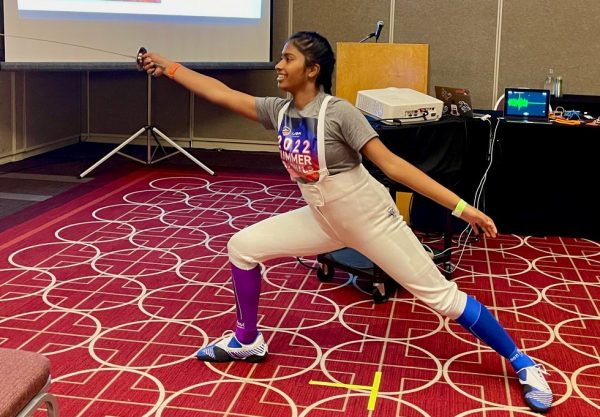 ExperimentWhat do neuroscience and fencing have in common? This was a question asked—and answered!— by Supriya Nair, high-schooler and neurofencer from Washington State. After winning WA State Science Fair two years in a row using our gear, this young scientist took the opportunity to present her neurofencing research at US Fencing Nationals in Minneapolis—and volunteered […]
ExperimentWhat do neuroscience and fencing have in common? This was a question asked—and answered!— by Supriya Nair, high-schooler and neurofencer from Washington State. After winning WA State Science Fair two years in a row using our gear, this young scientist took the opportunity to present her neurofencing research at US Fencing Nationals in Minneapolis—and volunteered […] -
 EducationCats and dogs aren’t the only pets fond of chasing things that run away from them. Aquarium fish do it too, as shown in our new peer-reviewed paper that came out just last week in the “Animals” journal! Out of 66 fish species observed, nearly 90% showed interest in or set out to chase moving […]
EducationCats and dogs aren’t the only pets fond of chasing things that run away from them. Aquarium fish do it too, as shown in our new peer-reviewed paper that came out just last week in the “Animals” journal! Out of 66 fish species observed, nearly 90% showed interest in or set out to chase moving […] -
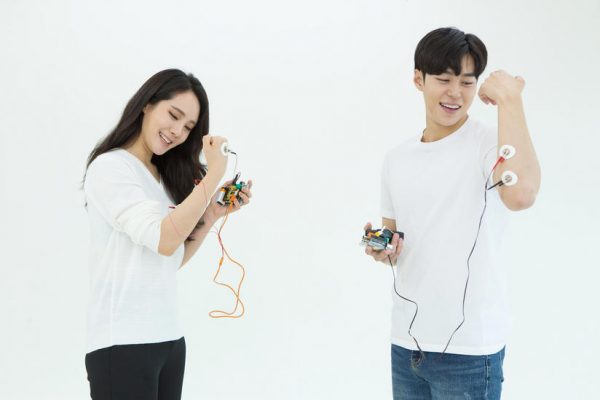 HardwarePicture this: you’re sitting in your bedroom in Germany, video chatting with a friend in South Korea over coffee. You sip your coffee and they have no choice but to sip theirs! That’s exactly what our new prototype, the Wireless Human-Human Interface, is about. It transmits biosignals from one person’s brain to the ulnar nerve in […]
HardwarePicture this: you’re sitting in your bedroom in Germany, video chatting with a friend in South Korea over coffee. You sip your coffee and they have no choice but to sip theirs! That’s exactly what our new prototype, the Wireless Human-Human Interface, is about. It transmits biosignals from one person’s brain to the ulnar nerve in […] -
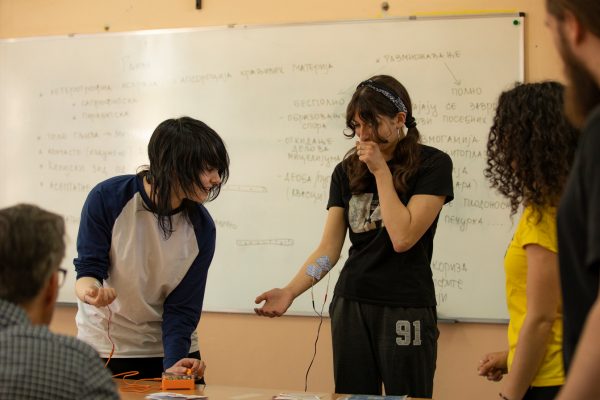 EducationOur DIY neuroscience gear has already seen over a hundred countries all over the world. And it doesn’t intend to stop! So to scratch the gear’s itch, we decided to organize two more demoes in Europe—this time, in Branko Radicevic High School and Simeon Aranicki Elementary in the town of Stara Pazova (Serbia). Our team members […]
EducationOur DIY neuroscience gear has already seen over a hundred countries all over the world. And it doesn’t intend to stop! So to scratch the gear’s itch, we decided to organize two more demoes in Europe—this time, in Branko Radicevic High School and Simeon Aranicki Elementary in the town of Stara Pazova (Serbia). Our team members […] -
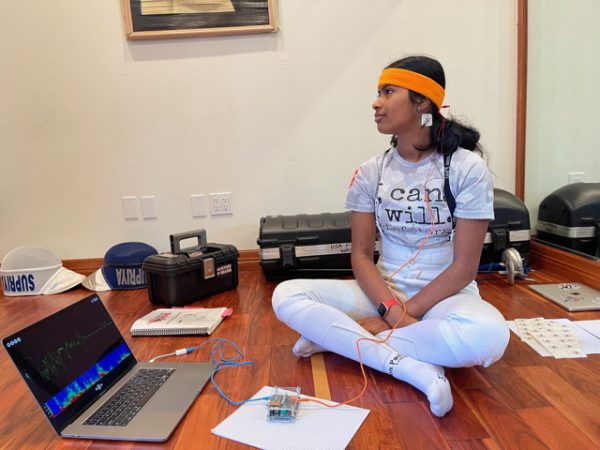 ExperimentSwift and agile musclework and bladework is all you need to be a good fencer. Or is it? As it turns out thanks to Supriya Nair, an eighth-grader from Redmond, WA, the brain and heart have their fair share in it too! The young scientist’s research project on neurofencing just won her yet another first place […]
ExperimentSwift and agile musclework and bladework is all you need to be a good fencer. Or is it? As it turns out thanks to Supriya Nair, an eighth-grader from Redmond, WA, the brain and heart have their fair share in it too! The young scientist’s research project on neurofencing just won her yet another first place […] -
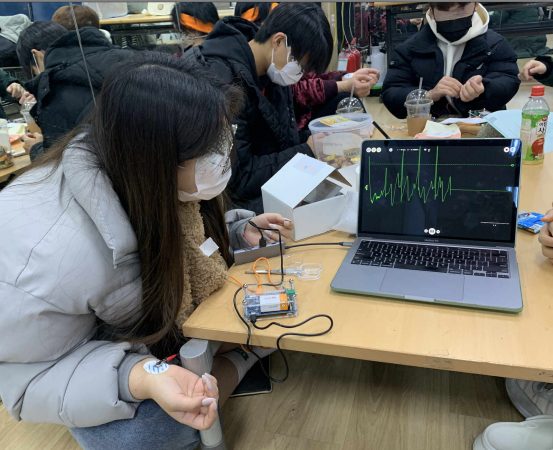 Education— Written by Tim Marzullo — Backyard Brains’ mission is to spread neuroscience around the world. Our motto is Neuroscience for Everyone! So naturally, when a group of MIT undergraduate students led by Jiwon Kim contacted us, telling us that they were interested in our equipment for some classes they were teaching at Yeomyung School in […]
Education— Written by Tim Marzullo — Backyard Brains’ mission is to spread neuroscience around the world. Our motto is Neuroscience for Everyone! So naturally, when a group of MIT undergraduate students led by Jiwon Kim contacted us, telling us that they were interested in our equipment for some classes they were teaching at Yeomyung School in […] -
 EducationWhat’s the effect of our warming climate on Venus flytrap, a carnivorous, bloodthirsty (or shall we say fly-thirsty?) yet vulnerable plant? And how can we help preserve this amazing species? These questions were asked by 18-year-old Mulin Huan from Princeton High School in New Jersey, whose research project made it to top 300 high school […]
EducationWhat’s the effect of our warming climate on Venus flytrap, a carnivorous, bloodthirsty (or shall we say fly-thirsty?) yet vulnerable plant? And how can we help preserve this amazing species? These questions were asked by 18-year-old Mulin Huan from Princeton High School in New Jersey, whose research project made it to top 300 high school […] -
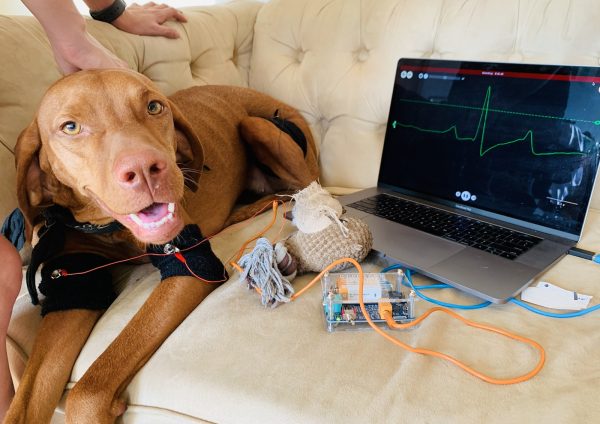 Experiment— Written by Tim Marzullo — All vertebrate animals have hearts (and many invertebrates too), and many have EKGs that can be non-invasively recorded as commonly done in humans. We have fairly hairless bodies, so we can easily put sticker electrodes on our wrists or chests to record our EKG. However, many of us share our households […]
Experiment— Written by Tim Marzullo — All vertebrate animals have hearts (and many invertebrates too), and many have EKGs that can be non-invasively recorded as commonly done in humans. We have fairly hairless bodies, so we can easily put sticker electrodes on our wrists or chests to record our EKG. However, many of us share our households […] -
 BizAre you part of an organization registered as public charity in the US or Canada? If yes, now is the time to apply for up to $1,500 that you can use towards planning out an outreach for next year’s Brain Awareness Week (March 14 – March 20, 2022)! If awarded, you could use this money to […]
BizAre you part of an organization registered as public charity in the US or Canada? If yes, now is the time to apply for up to $1,500 that you can use towards planning out an outreach for next year’s Brain Awareness Week (March 14 – March 20, 2022)! If awarded, you could use this money to […] -
 Education— Written by Natalia Díaz — Hello. I’m here again! And this will be my last update on my neuromathematical project. If you don’t remember me, I’m Natalia Díaz, and I’m doing my university internship at Backyard Brains. (If you’re wondering what I’m talking about when I say neuromathematics, check out my first and second blog post.) In […]
Education— Written by Natalia Díaz — Hello. I’m here again! And this will be my last update on my neuromathematical project. If you don’t remember me, I’m Natalia Díaz, and I’m doing my university internship at Backyard Brains. (If you’re wondering what I’m talking about when I say neuromathematics, check out my first and second blog post.) In […] -
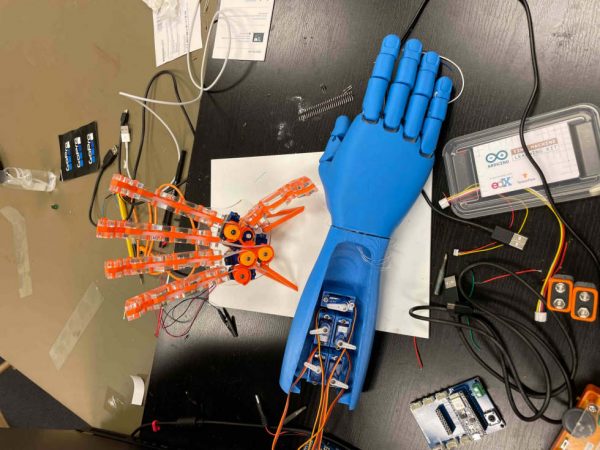 Fellowship— Written by Fredi Mino — Welcome to the final update on my TinyML Robot Hand project! After collecting sEMG (surface electromyography) data, feeding them into a neural network, and producing a machine learning model that can accurately classify different hand gestures, I can proudly say that my eagle has landed! Deploying and integrating the model proved […]
Fellowship— Written by Fredi Mino — Welcome to the final update on my TinyML Robot Hand project! After collecting sEMG (surface electromyography) data, feeding them into a neural network, and producing a machine learning model that can accurately classify different hand gestures, I can proudly say that my eagle has landed! Deploying and integrating the model proved […] -
 Fellowship— Written by Sofia Eisenbeiser — Well, folks, we made it. The last week, the final frontier, time to sink or swim. Luckily, I’ve spent the past 10 weeks with the most expert swimmers of all, our BYB fish. And, boy, have they taught me well. So, let’s dive in! Alright, where were we? In the beginning […]
Fellowship— Written by Sofia Eisenbeiser — Well, folks, we made it. The last week, the final frontier, time to sink or swim. Luckily, I’ve spent the past 10 weeks with the most expert swimmers of all, our BYB fish. And, boy, have they taught me well. So, let’s dive in! Alright, where were we? In the beginning […]